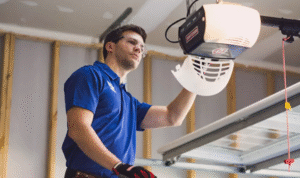Have you ever wondered how professionals detect hidden problems in a home or building—like moisture, faulty wiring, or missing insulation—without tearing through walls? The answer lies in thermographic inspections. This powerful, non-invasive method uses infrared technology to reveal issues based on temperature differences.
In this article, we’ll explain what thermographic inspections are, how thermographic inspection work, what tools are involved, and why they’re such a valuable part of maintaining any property.
What Is a Thermographic Inspection?
A thermographic inspection (also known as thermal imaging or infrared inspection) involves using an infrared camera to measure the surface temperature of objects inside a home or building. The camera creates visual images called thermograms that highlight hot and cold areas.
These temperature patterns often reveal hidden problems, such as:
-
Air leaks
-
Insulation gaps
-
Moisture trapped in walls
-
Overheated electrical circuits
Understanding how thermographic inspection work is key to catching issues early—before they lead to more costly repairs.
How Thermographic Inspection Work: The Technology Behind It
The foundation of any thermographic inspection is an infrared camera. Unlike regular cameras that capture visible light, infrared cameras detect heat emitted by objects and surfaces. These heat readings are displayed as color-coded images, where each color represents a different temperature.
Common Color Patterns in Thermal Images:
-
Warm areas: shown in red, orange, or yellow
-
Cool areas: appear in blue, green, or purple
By examining these images, inspectors can identify abnormal temperature changes that often signal trouble—like a cold patch on a wall due to missing insulation or a warm electrical outlet that might be overheating.
When Should You Use Thermographic Inspection?
Thermographic inspections are useful in a wide range of situations, whether you’re buying a home or maintaining a commercial facility. Common uses include:
1. Energy Efficiency Inspections
Thermal imaging helps pinpoint where heat is escaping and where insulation may be lacking—ideal for lowering your energy bills.
2. Pre-Purchase Home Inspections
Want to know if the house you’re buying has hidden issues? A thermographic scan can uncover unseen moisture, leaks, or faulty wiring.
3. Moisture and Leak Detection
If there’s been a leak or flood, thermal imaging can find remaining dampness that might lead to mold.
4. Electrical Safety
Hot spots in electrical systems can be a sign of danger. Thermal imaging can detect problems before they cause failures or fires.
5. Routine Commercial Maintenance
Businesses use thermographic inspections to monitor HVAC systems, check insulation, and inspect electrical panels regularly.
Step-by-Step: How Thermographic Inspection Work
Here’s what to expect during a typical thermographic inspection:
Step 1: Setting the Conditions
To get accurate results, a temperature difference is needed between inside and outside—usually around 20°F or more. This makes heat loss or cold drafts more visible. In some cases, a blower door test is used to help reveal air leaks by pulling air from the home.
Step 2: Scanning the Building
The inspector uses an infrared camera to examine:
-
Walls and ceilings
-
Windows and doors
-
Attics and basements
-
Electrical systems and breakers
-
Plumbing and HVAC equipment
They slowly move through the space, capturing images that highlight temperature differences.
Step 3: Reviewing the Results
Once images are captured, the inspector studies them to interpret unusual thermal patterns. Examples include:
-
A cold spot in an attic may point to missing insulation
-
A warm light switch could suggest a wiring problem
-
Cooler areas in a wall may indicate hidden moisture
Experience and training are important—professional inspectors know how to spot genuine issues and avoid false alarms.
Step 4: Reporting and Recommendations
After the inspection, you’ll receive a detailed report, which includes:
-
Thermal images and any related visual photos
-
Observations on temperature anomalies
-
Repair suggestions or advice for further evaluation
This report gives you a clear understanding of your home’s condition, with actionable steps to address any problems.
Why Thermographic Inspections Matter
Learning how thermographic inspection work shows just how valuable they can be. Some of the biggest benefits include:
✅ Non-Destructive Testing
Inspections are done without cutting into walls or damaging finishes.
✅ Preventative Maintenance
Find and fix problems early—before they become expensive or hazardous.
✅ Energy Savings
Locating and sealing drafts or adding insulation can significantly reduce energy costs.
✅ Mold and Moisture Detection
Catch hidden dampness before it leads to mold growth or structural damage.
✅ Electrical Fire Prevention
Identify overheating components early and improve electrical safety.
Limitations of Thermographic Inspections
While thermal imaging is powerful, it does have some limitations:
-
It doesn’t allow you to see “through” walls—only surface temperature changes.
-
It doesn’t always reveal the root cause—further inspection might be needed.
-
Accurate results depend on conditions like indoor-outdoor temperature differences.
-
Proper interpretation requires a trained and certified inspector.
That’s why working with experienced professionals is essential for getting the most out of your inspection.
Why Choose Protec for Your Infrared Inspection?
At Protec Inspections, we specialize in accurate and reliable thermographic inspections. Our experienced team uses advanced infrared technology and knows how to interpret the results with precision.
When you hire Protec, you can expect:
-
Detailed, easy-to-understand inspection reports
-
High-resolution thermal and visual imagery
-
Honest advice and clear repair suggestions
-
Competitive pricing and exceptional customer service
Whether you’re buying a home, planning a renovation, or just want to check your property’s energy performance, we’re here to help you make informed decisions.
Final Thoughts
Now that you have a better understanding of how thermographic inspection work, it’s easy to see why they’re such a smart investment. These inspections help you find hidden issues—like heat loss, moisture, or electrical problems—before they cause bigger headaches.
A thermographic inspection can save you money, increase safety, and provide peace of mind. If you want a better look at what’s going on behind your walls, ceilings, and systems—without damaging anything—this is the solution.
Schedule your thermal inspection with Protec today, and get a clearer view of your home’s true condition.


![1TikTokRM-MB7213x3packModallow-rise[1]](https://dailystorypro.com/wp-content/uploads/2025/06/1TikTokRM-MB7213x3packModallow-rise1-300x300.png)


